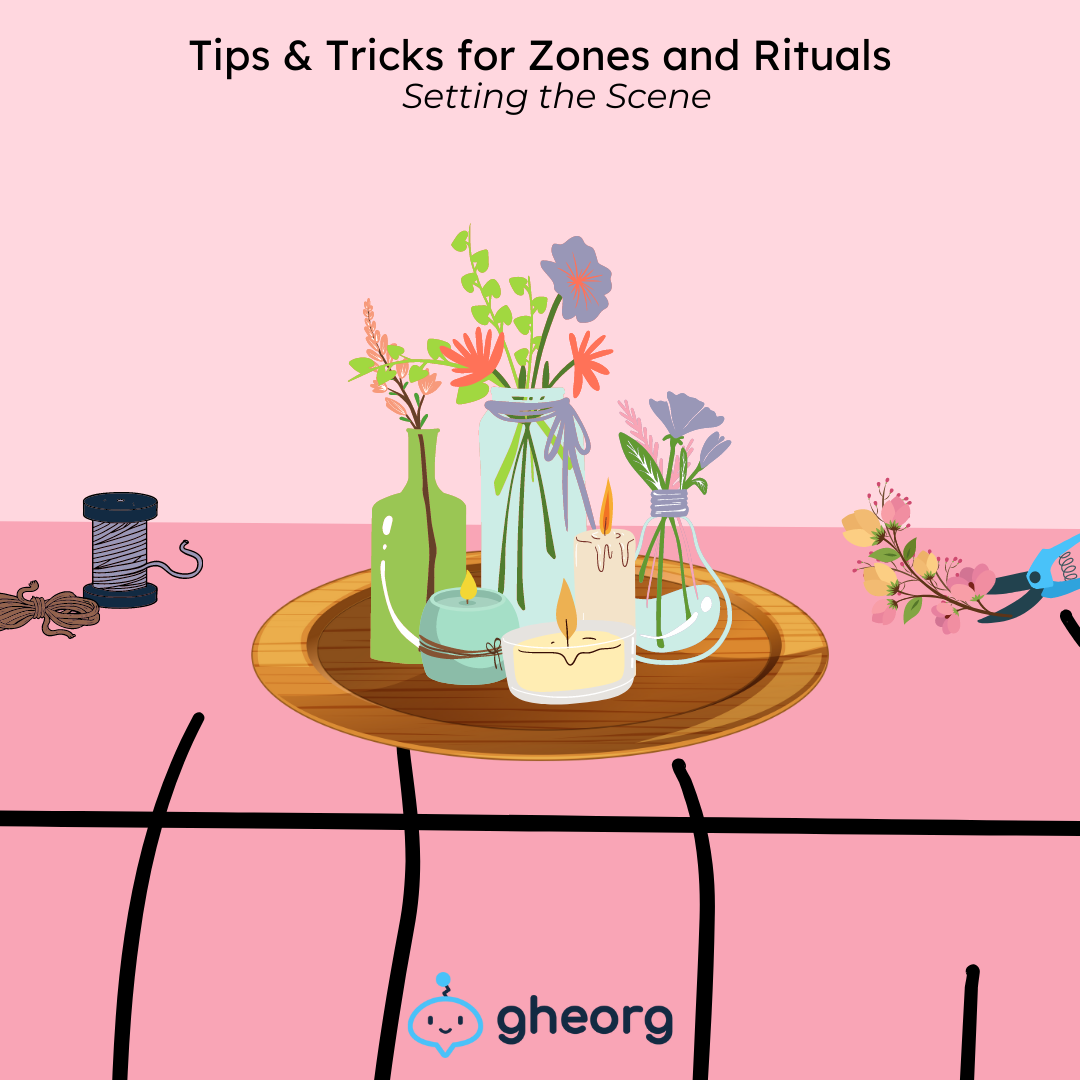How to create Positive Zones & Rituals to easy anxiety at home for kids: creating space for your child to rest, learn & play
We’ve put together a few ideas of how you can make the most of zones and rituals in your home during pandemic disruptions.
Clear boundaries for rest, learning and play can help keep kids purposeful and empowered. It’s not such a bad idea for parents, either!
We always encourage parents to take care of their own mental health just as much as their children’s. You may find some of these strategies positive for your own routine, especially if you are working from home.
Creating dedicated zones and rituals supports an effective transition between spaces and activities. Especially when these are regularly being switched between digitally, or within areas of home.
Having a trigger for our brains and bodies to differentiate between different activities and peoples’ needs is great for shared spaces.
Daily zones or rituals can be a:
TV & Movie watching zone
Eating zone
Bedtime ritual
Art & craft zone
Gaming session zone
Family check in rituals
Mindfulness & gratitude rituals
Reading nook (zone)
Family game night ritual
Creating ‘space’ for childrens’ reflection and down time
For children living with anxiety, it can be helpful to create a structured daily ritual to help them process their thoughts and feelings from each day.
This could be a regular area or space to do meditation, drawing a picture, writing a journal, reading a book together, or doing a mindfulness activity like within the Gheorg app!
To implement this as a consistent ritual, aim to encourage your child to do it at the same time each day. This might be after their afternoon tea before they do their homework. Or it could be in the morning after breakfast before they start school or daycare.
To give your child some environmental triggers, you can create a mindfulness ‘nook’. This could be a special cushion or beanbag. It can also be put away until each ‘reflection time’.
Children that like to interact with the world through touch might also like a special pen, notebook or toy to hold during their reflection time.
Eggtimers can also be a fun way to create a structure and timeframe for your child’s reflection time.
Wearing many hats: how to transition between activities
Is your dining table used for homework, arts and crafts, as well as mealtimes? For a space ‘wearing many hats’, encourage zones to create separation between each ‘mode’.
Zoning could look like a dedicated shelf near the dining table. Each mode has its own container or basket on the shelf. Try one for homework stationary, one for arts and crafts supplies, and one for setting the table.
It can help kids switch modes or switch off from previous events. Packing their tools back into the basket and back on the shelf signals their brain that the activity has been completed. Not only is that good for self-esteem and mental clarity, it also helps keep the home tidy for everyone!
Rituals don’t have to be a big ‘event’. A great ritual to embrace is setting the table for dinner.
Empower your child to:
Put on a tablecloth & placemats
Set the cutlery
Fill glasses of water
Choose the condiments.
Try putting some of these items in a dedicated zone little ones can reach too. They may even start setting the table on their own initiative!
Healthy limits & boundaries through positive zones & rituals
Consider making a habit of eating at the table as a family as much as possible.
It helps to separate eating and watching TV. Snacking in front of TV can become a sneaky habit when children (and adults!) are home a lot.
For family dinners at the dining table, encourage your children to pick some flowers or make a centrepiece. They can finish the look by creating place names, napkin rings or folded napkins.
Of course, vegging out is fun some of the time!
So, it’s a great idea to have a dedicated pizza & movie night once a week (rather than the daily default). Kids can craft boxes for homemade popcorn. Pillows, cushions and blankets on the floor change it up from the usual ‘zone’. This helps recreate that novelty ‘going out to the movies’ experience.
We want to encourage parents to take care of their own mental health during challenging times just as much as your children. Supporting your child with their emotions while also managing your own can be a lot on your plate.
The Gheorg app can be a great way to share the load and support your child as well as your household!




